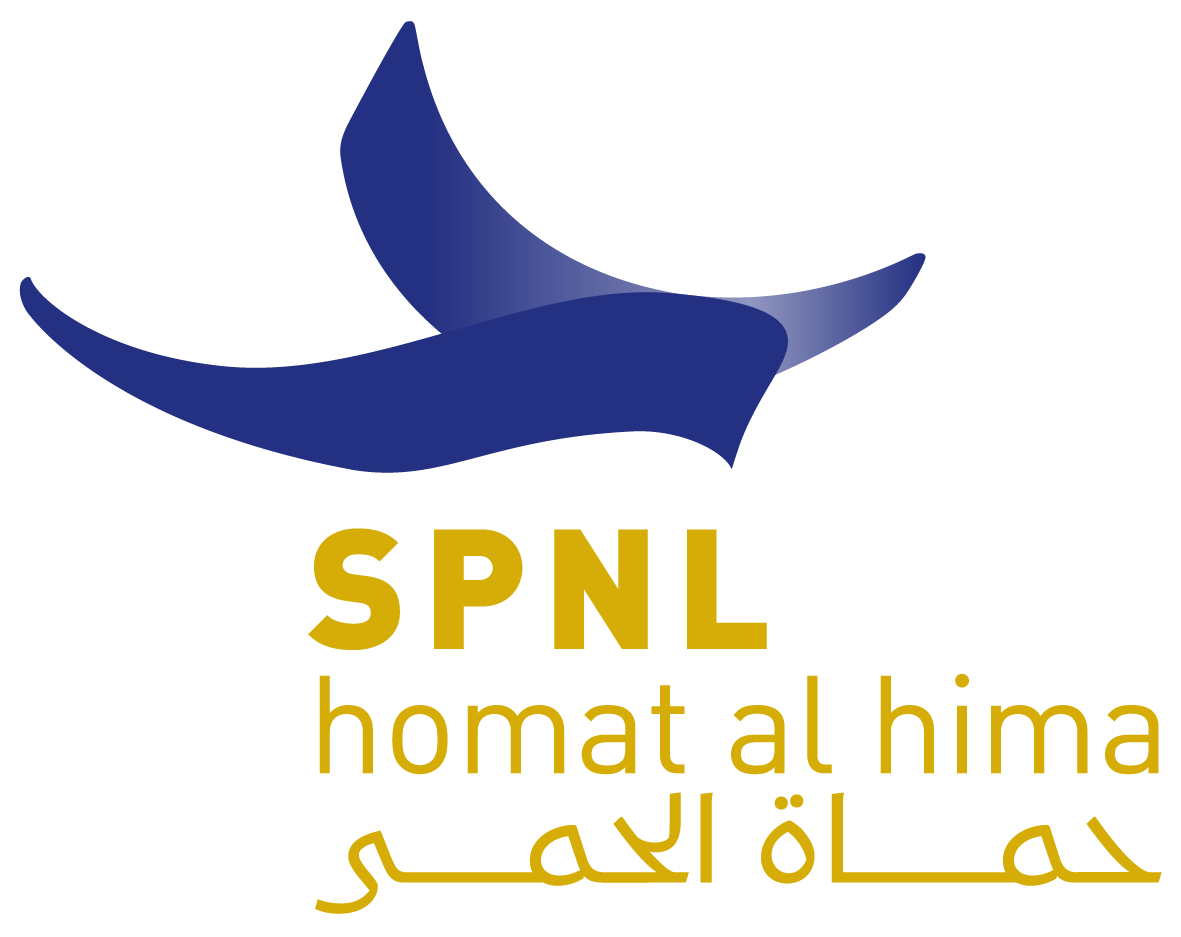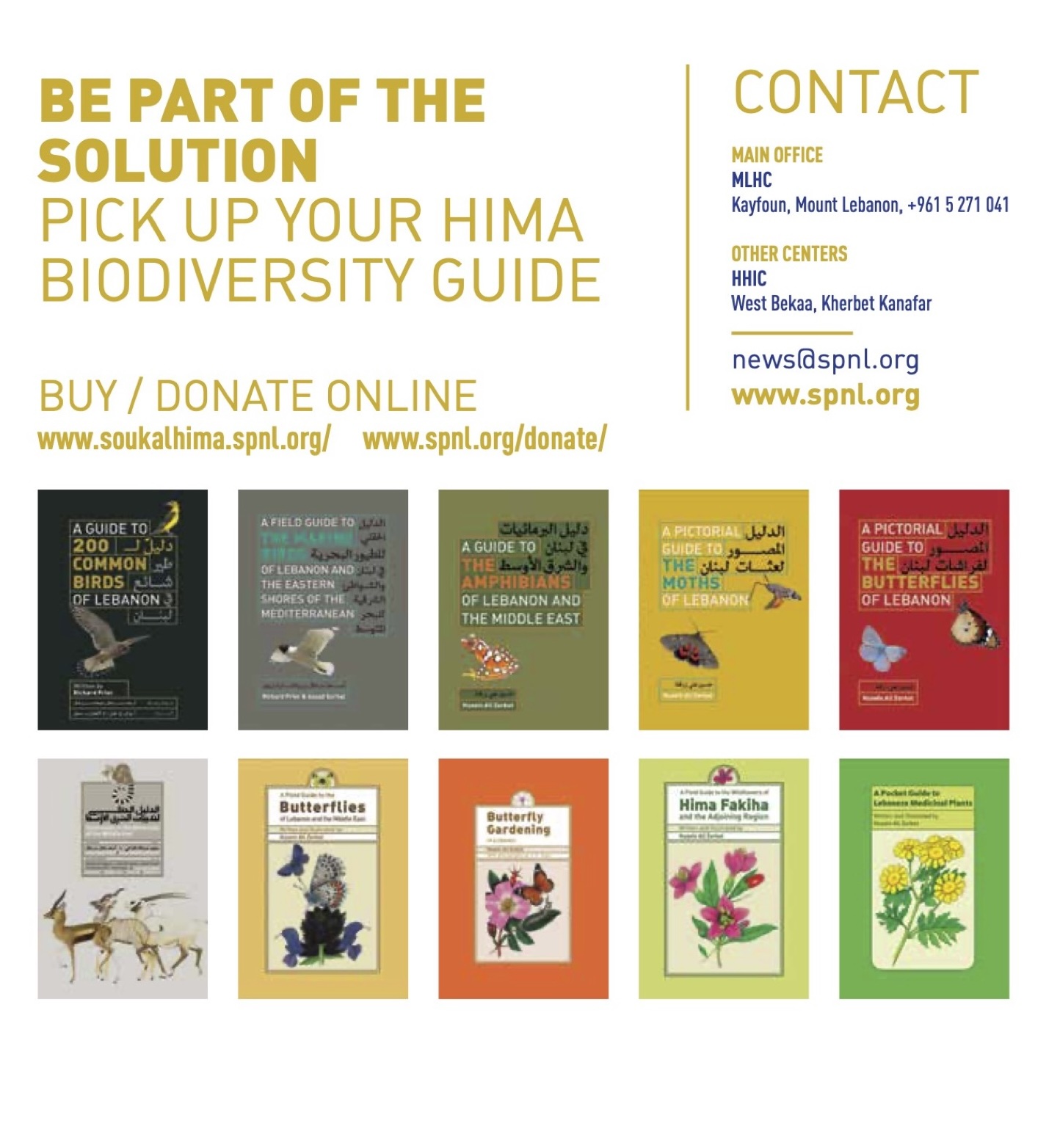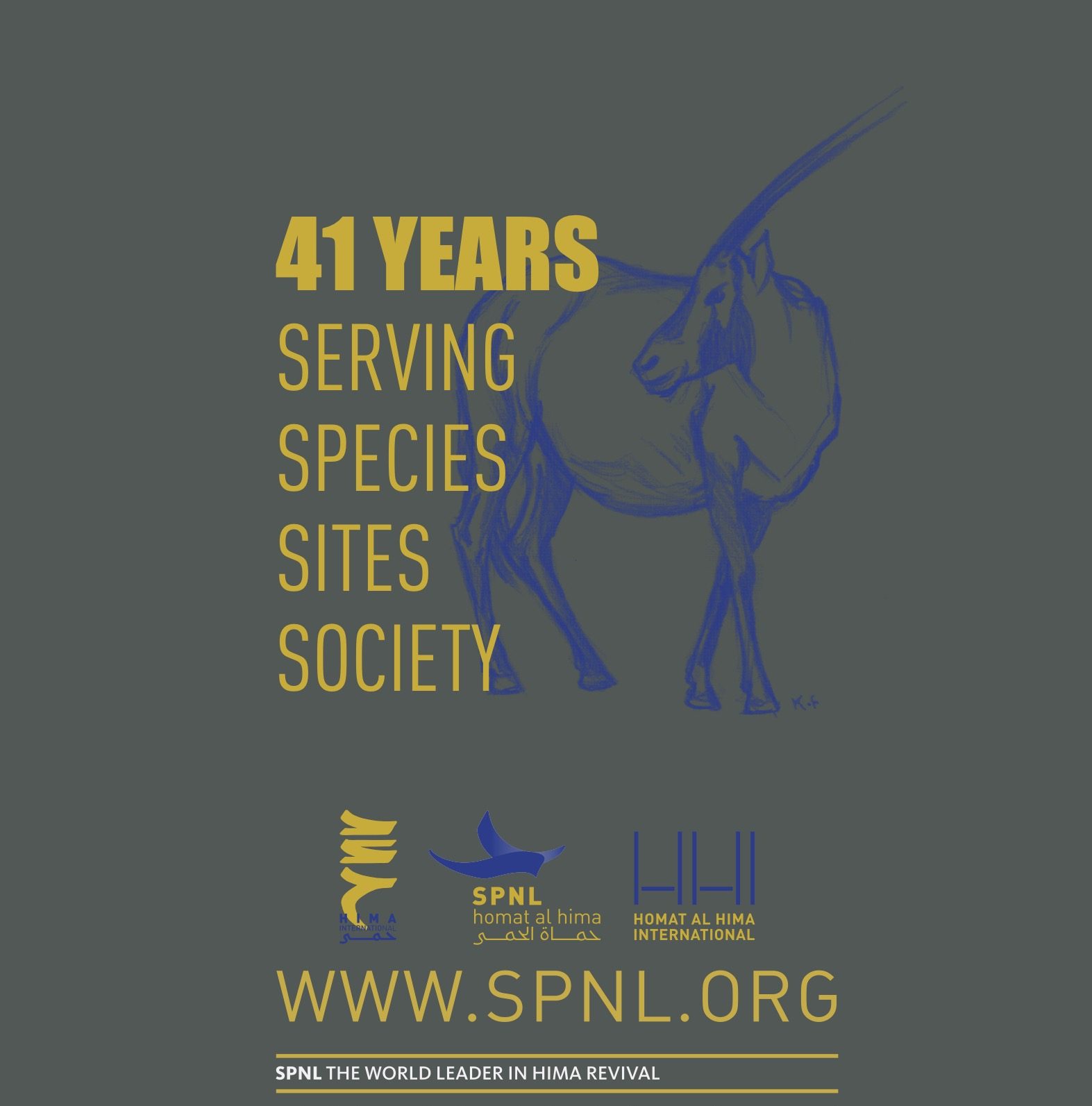In the presence of the Minister of Environment, Dr. Nasser Yassin, and a representative of the EU Delegation to Lebanon, Deputy Head of Cooperation Ms. Alessia Squarcella, the “Annual Forum for Hima Areas” was held yesterday at the invitation of the Society for the Protection of Nature in Lebanon (SPNL), at the Homat al Hima International Center in Khirbet Qanafar in the Bekaa, within the framework of The EU-funded BioConnect project, which seeks to strengthen the management and governance of sites of environmental importance in southern Lebanon and create new protected areas in order to conserve landscapes and broader biodiversity in the southern portion of Lebanon. The meeting was also attended by representatives of the project’s partner associations, mayors of various towns, and social and environmental activists.
The forum opened with a welcome speech to the attendees from the head of the center, Wassim Al-Khatib, explaining the idea of the forum and the BioConnect project and announcing the recent signing of an agreement to establish a Hima area with the municipality of Rashaya.
Serhal
 Assad Serhal, director general of the Society for the Protection of Nature in Lebanon (SPNL) and Chairman of Birdlife Middle East Partnership confirmed that today’s meeting is a continuation of the Hima role that SPNL has been performing for twenty years so that there are now 31 different Hima all over Lebanon. This system was adopted by the Lebanese state and has become part of the Protected Areas Law, and thus became directly with the municipalities part of the Hima whom we celebrate today, under the auspices of the Minister of the Environment and in the presence of the European Union which is financing this project and partners of SPNL, they are young men and women from the village. The primary goal is to train them to become guards and guides in the Hima areas to walk with them. People on the Hima trails – these are all programs, besides the young Hima guardians, a school without walls.” He said, “We signed an agreement with the Ministry of Education so that they would get to know the Hima areas and visit areas outside their villages so that they would get to know Lebanon, so that every Lebanese, before graduating from school, would know his country through the Hima.” He added that this project is the first of its kind in Lebanon, and it is a four-year project from the Tyre Reserve in the south and linked through the Hima with Al-Mansouri to reach Mount Hermon with the Rashaya Hima until the seven Himas of the western Bekaa Valley, including Ain Zebda and Khirbet Qanafar, all the way to the Chouf Cedar Reserve in Mount Lebanon and to the Himas of Hammana and Ras El Matn. He said that this environmental project is ambitious and successful, and its goal is to bring people together and to connect natural areas with each other, as it makes it possible for wildlife to move from one area to another in safety and creates social and economic interaction.
Assad Serhal, director general of the Society for the Protection of Nature in Lebanon (SPNL) and Chairman of Birdlife Middle East Partnership confirmed that today’s meeting is a continuation of the Hima role that SPNL has been performing for twenty years so that there are now 31 different Hima all over Lebanon. This system was adopted by the Lebanese state and has become part of the Protected Areas Law, and thus became directly with the municipalities part of the Hima whom we celebrate today, under the auspices of the Minister of the Environment and in the presence of the European Union which is financing this project and partners of SPNL, they are young men and women from the village. The primary goal is to train them to become guards and guides in the Hima areas to walk with them. People on the Hima trails – these are all programs, besides the young Hima guardians, a school without walls.” He said, “We signed an agreement with the Ministry of Education so that they would get to know the Hima areas and visit areas outside their villages so that they would get to know Lebanon, so that every Lebanese, before graduating from school, would know his country through the Hima.” He added that this project is the first of its kind in Lebanon, and it is a four-year project from the Tyre Reserve in the south and linked through the Hima with Al-Mansouri to reach Mount Hermon with the Rashaya Hima until the seven Himas of the western Bekaa Valley, including Ain Zebda and Khirbet Qanafar, all the way to the Chouf Cedar Reserve in Mount Lebanon and to the Himas of Hammana and Ras El Matn. He said that this environmental project is ambitious and successful, and its goal is to bring people together and to connect natural areas with each other, as it makes it possible for wildlife to move from one area to another in safety and creates social and economic interaction.
Squarcella
Deputy Head of Cooperation in the EU Delegation to Lebanon,Ms. Alessia Squarcella said: “Our meeting may seem out of place when the tragedy occurs only a few kilometers away. But, especially in difficult times like these, discussing how we can protect our collective homeland and passing it on to future generations is essential. She added, “Lebanon’s rich biodiversity faces many threats in this collective habitat.” “Including habitat loss, unsustainable exploitation of natural resources, pollution, and climate change.”
She also said that the current economic crisis exacerbates these challenges, which requires us to take the necessary measures. In response to these challenges, the European Union has been actively involved in environmental initiatives in Lebanon. In 2021, the European Union launched the BioConnect project to support local authorities and NGOs in Lebanon.
Yassin
In turn, Environment Minister Dr. Nasser Yassin welcomed the project and said despite all the negatives around us and the crises, these projects are all positive and give great hope because protecting the Hima means making everyone responsible and concerned and making the people of the region the guardians of nature and they are concerned with protecting forests from fires. He said, “In a simple and close inventory, we noticed this through the fire index, which declined significantly. In the summer of 2021, the highest rate of fires was recorded in the last ten years, but in 2022, the burned areas decreased to 370 hectares, meaning an average decline of 90%. We did not take this indicator into account.” But we waited until the year 2023. In its history, Lebanon has never witnessed such a rise in temperatures. Also, the fire index was reduced to 330 hectares. This results from working locally and forming groups that monitor, keep pace and upload pictures via WhatsApp. The result was positive, and he pointed out that this project resulted from zero budget.
“If there is no local embrace of forests, trees, reserves, and Hima, then there is the importance of involving the municipalities in the reserves and Hima in local management. It cannot succeed unless we transform the local economy and work to make these areas connected, connect the Hima among them, and train groups. From the Hima areas and marketing the reserves and Hima internally and externally, this contributes to creating economic activity.” he concluded.
Khatib
Ms. Bassima Al-Khatib, head of the conservation department at SPNL, introduced the BioConnect project. The number of protected areas and the area they cover in the country is well below international standards, currently standing at 2.18% of the 17% target for terrestrial and freshwater ecosystems by 2020. Moreover, some existing protected areas cannot effectively ensure biodiversity conservation due to insufficient resources for management and implementation and insufficient participation of local people. The current economic crisis also has a serious impact on biodiversity. The scarcity of the state’s human and financial resources makes the management of protected areas difficult, so NGOs and local stakeholders must undertake basic management activities, as is the case in Hima.
Completed projects and units activities
In this context, Stephanie Ferando presented the projects completed so far. The team, each member within his or her job description, also presented the preliminary results of the biological survey study in the various areas, the results of the mammal’s study being presented by Mounir Abi Said, the results of the birds’ study by Chadi Saad, and the results of the plant’s study by Hussein Zurqot.
Regarding the achievements of the Hima programs in the project, Andre Bechara presented the results of the SNOW program in the Hima areas. Rania Al-Khalil presented the Homat Al-Hima program, while engineer Farid Ammouri spoke about the Hima Farm program. The activities of the APU were also presented, whereby Adonis Khatib presented the results of the Anti-Poaching Unit (APU) work. Waseem Al-Khatib also presented a summary of the activities of the Fish and Wildlife Unit. After the presentation, everyone visited Mansoura Hima and ate lunch in Ain Zebde.
About SPNL
Society for the Protection of Nature in Lebanon – SPNL is one of the oldest environmental NGOs in Lebanon. It was established in 1983 under Lebanese Laws and licensed by the Ministry of Interior by decision no. 6/AD dated 8/1/1986.
SPNL is the national partner for BirdLife International in Lebanon. It considers birds as entry points for the conservation of wider natural resources, as they act as key indicators of the status and health of ecosystems.
Since its establishment in 1986, SPNL has advocated the establishment of protected areas and initiated the protected areas in Lebanon with the Ministry of Environment. After twenty years of experience working with nature reserves through government agencies, SPNL is now reviving and advocating the Hima community-based conservation approach prevalent in the Arabic region for more than 1500 years.
SPNL has a long experience in scientific research (mainly avifauna and biodiversity), education and awareness, advocacy and networking, and community development.
As a national environmental NGO in Lebanon, SPNL has widely contributed to raising awareness of environmental issues and concretely protecting natural areas in Lebanon. As a World Conservation Union (IUCN) member, SPNL has helped develop Lebanon’s first biodiversity project, the Protected Areas Project.
BioConnect is an EU funded project that aims to ensure effective management and governance at sites of ecological importance and expending biodiversity protection in southern Lebanon.
#EUBioConnect4Lebanon
The European Union supports Lebanon’s stability, independence and sovereignty, its prosperity and democratic order. It strives also to help protect its environment and natural resources by supporting sustainable enterprise and development.
Find out more about the EU’s work in Lebanon or follow it on Twitter, Facebook and Instagram at @EUinLebanon
About the project
“Ensuring effective management and governance in Sites of Ecological Importance and expanding biodiversity protection in Southern Lebanon” is a project Funded by the European Union and communicated under the title of “Bioconnect”
This 45-month project (1st February 2022 – 31st October 2025) is a joint effort between 4 Lebanese Partners: Al Shouf Cedar Society (ACS), Association for the Development of Rural Capacities (ADR), Association for Community and Environment (ACE), and Society for the Protection of Nature in Lebanon (SPNL), that are working together towards enhancing the management and governance of sites of ecological importance as well as creating new Protected Areas and OECMs for broader landscape conservation. These main objectives will be achieved by increasing ecosystem health and socio-economic benefits and abating the main pressures on key biodiversity while supporting local communities.
SPNL’s part in the project
Geographical scope
Four central regions: Coastal South Lebanon, West Bekaa, Mount Lebanon, and the Mountains of South Lebanon. The project will address the following Himas: Qoleileh and Mansouri, Kherbet Qanafar, Ain Zebdeh, Hammana, Ras Al Matn, and Ebel es-Saqi, respectively.
Strategic aims
Biodiversity conservation – developing and implementing Biodiversity monitoring schemes and protocols for plants, birds, herpetofauna, and mammals to enhance the knowledge of the current biodiversity in the targeted areas. Additionally, a Citizen-sciences protocol will be developed to ensure the sustainability of the research effort. The collected data will be filled in to achieve efficient land-scape connectivity, hence a decreased fragmentation between PAs and better management planning.
Traditional practices empowerment – Under the Hima farm program, this project will ensure technical support for farmers to improve agriculture practices that benefit people and nature.
Education and Capacity Building – through SPNL’s Educational programs, SNOW (School with No Walls) for children and Homat Al Hima for youth, this project will ensure the development and delivery of general and focused education and awareness-raising sessions for local communities. This will help raise locals’ knowledge and capacities towards achieving self-sustained Hima sites. Moreover, ecotourism activities will be developed and implemented to increase the eco-touristic value of the targeted areas. This learning journey during this project will be supported by the annual Hima Forums, where Hima leaders will be invited to share success stories and explore new skills and concepts.
Climate change mitigation and adaptation – Since Climate change is a reality affecting nature and people’s livelihood, a Framework for ecosystem-based climate change mitigation and adaptation for Protected Areas will be developed and communicated with concerned stakeholders. This framework will help increase the resilience of Protected Areas in Lebanon facing the effects of Climate change.
Policy making and advocacy – Based on all the outputs and outcomes of this project, municipal decisions will be drafted in collaboration with the municipalities to protect biodiversity and ensure sustainable use of resources. These decisions will tackle different sectors, such as Hunting, farming, and fishing.





















